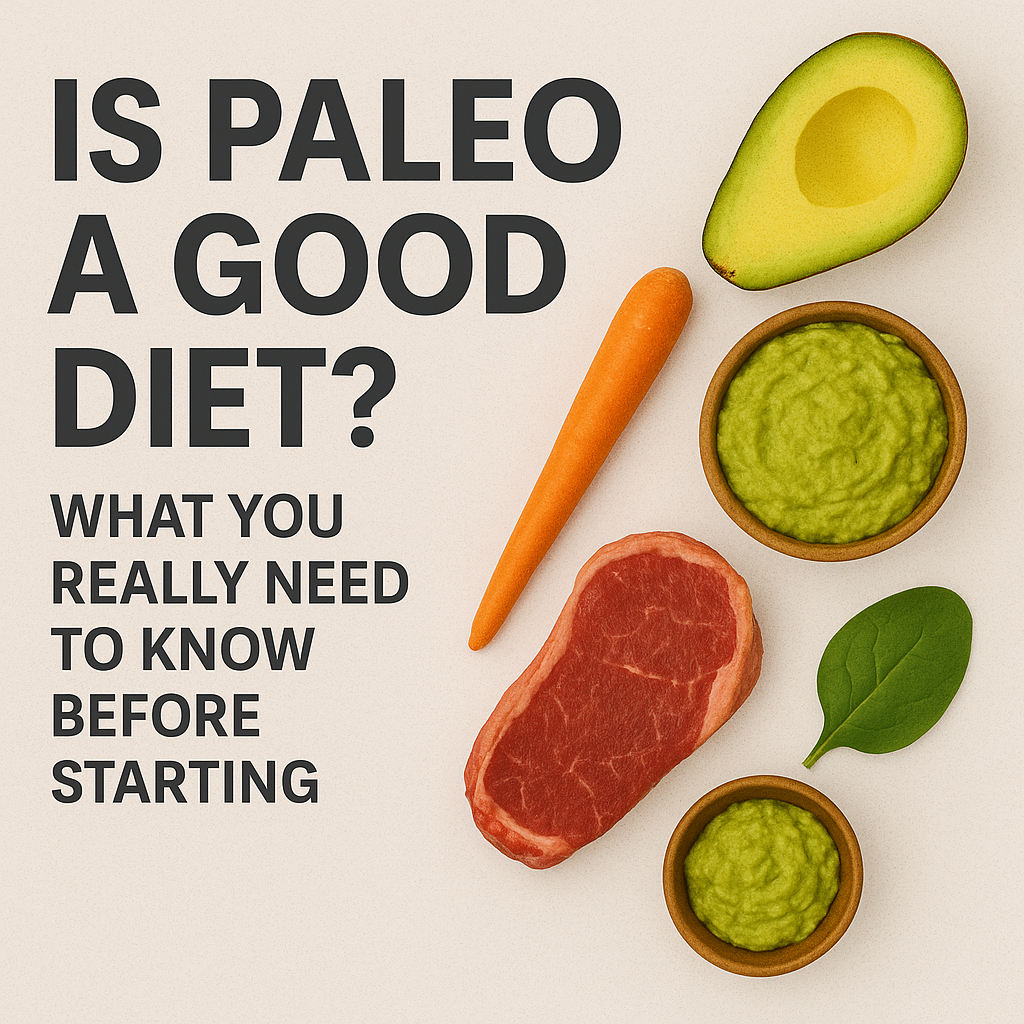Is Paleo a Good Diet? What You Really Need to Know Before Starting
Thinking about going Paleo but not sure if it’s actually a smart move? Let’s break it down with clarity, science, and a little personal insight.

🧬 What Does “Good” Really Mean When It Comes to Diet?
A “good” diet should:
- Nourish your body with nutrient-dense foods
- Support stable energy and digestion
- Be sustainable and enjoyable
- Help you feel strong, clear-headed, and balanced
So, does the Paleo Diet check those boxes? In short—yes, when done thoughtfully.
🌿 A Quick Refresher: What Is the Paleo Diet?
The Paleo Diet is based on the principle of eating how our ancestors did—whole foods that could be hunted or gathered. This means:
- ✅ Grass-fed meats, seafood, eggs
- ✅ Vegetables, fruits, nuts, and seeds
- ✅ Healthy fats like avocado, olive oil, and coconut
- ❌ No grains, legumes, dairy, or processed foods
Need more background? Here’s What the Paleo Diet Really Means to get you fully up to speed.
✅ Why Paleo Can Be a Great Diet for Many People
1. Whole Food Focus
Unlike fad diets that rely on gimmicks, Paleo is rooted in real, whole food. You’re not counting calories—you’re eating nutrient-dense meals that fuel you.
Try cooking with high-quality ingredients like:
2. Digestive Simplicity
By removing common irritants like gluten, dairy, and legumes, many experience less bloating, gas, and sluggishness. Gut health often improves—especially with help from Kettle & Fire Bone Broth or NOW Super Enzymes.
⚠️ Things to Watch Out For (And How to Avoid Them)
No diet is perfect unless you make it work for you. Here are some common mistakes people make on Paleo:
- Eating too much meat, not enough veggies
- Relying on processed “Paleo” treats too often
- Not planning meals in advance
For a helpful guide, don’t miss: Common Mistakes in Paleo Dieting
💡 How Paleo Compares to Other Diets
Unlike keto, which focuses on macros, or veganism, which excludes animal products, Paleo is more about quality than quantity.
Curious how it stacks up? Check out our breakdown of Paleo vs. Mediterranean Diet to see the pros and cons side by side.
🍳 Everyday Paleo Staples for Success
Having the right tools and staples makes Paleo so much easier—and more enjoyable.
Try these essentials:
| Category | Recommended Product |
|---|---|
| Protein | Ancient Nutrition Bone Broth Protein |
| Healthy Fats | 4th & Heart Grass-Fed Ghee |
| Snacks | Epic Provisions Chicken Sriracha Bars |
| Baking | Blue Diamond Almond Flour |
| Cookware | Lodge Cast Iron Skillet |
| Beverage Boost | Amazing Grass Greens Blend |
💬 So, Is Paleo a Good Diet?
If you want to eat real food, reduce inflammation, balance blood sugar, and feel more energized—yes, Paleo is an excellent option.
But it’s not a “magic cure.” Success depends on how you approach it. If you focus on quality foods and build a lifestyle around nourishment—not restriction—Paleo becomes more than a diet. It becomes a long-term wellness upgrade.
Need a structured plan to begin? Grab our 30-Day Paleo Meal Plan for simple, done-for-you guidance.
📘 Final Takeaway
The Paleo diet isn’t just “good.” It’s empowering—if you use it wisely.
Still curious? Dive deeper into the research with Is the Paleo Diet Healthy? or learn Why the Paleo Diet Is the Best.
